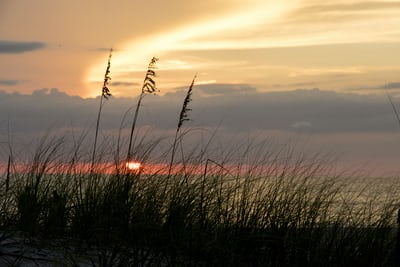A bold statement? Maybe. Yet although I am a naturopathic cancer focused doctor, I do often support chemotherapy based cancer therapies. What I don’t support however, is the illusion that chemotherapy alone will fix or cure your cancer. In the most hopeful situation, where an effective treatment protocol including chemotherapy (surgery, immune therapy and/or radiation for that matter) kills your tumour and puts you into cancer remission, don’t be fooled, as your cancer is not really gone. Nor, for that matter, has it given up its endless drive to want to return. Let’s take a moment to begin to understand why chemotherapy won’t cure your cancer but what you can do to greatly lower your risk of ever returning again.
Weeds in your lawn
This is the most basic yet precise analogy I use with my patients to explain how chemotherapy and the cancer process actually works. Let’s say you have have grown and developed a beautiful lawn. Yet, over time, it begins so slowly grow a small weed here and there, but not enough to take note or action over. As time passes, more weeds develop, yet your lawn is still green and lush. One morning however, you wake up only to stare in shock that your lawn has been all but taken over by invasive weeds. You frantically start to pull them out one by one, only to see them grow back and return even quicker. You finally decide to spray your lawn with chemicals to deal with the root of the problem. In some instances, the weeds slowly clear up, yet in most, they just can’t be controlled, and no matter how hard you try, you and your lawn finally give up to being overtaken by those relenting weeds.
Weeds, balance and nature
In the above analogy, it’s obvious that the weeds are analogous to cancer growing in your body. If your lawn is harmonious, natural, and healthy, the weeds that grow will be well controlled. Yet if your soil is unbalanced, not well fed, or inundated with poor environmental influences, invasive weeds will quickly take over. Keep in mind that not all weeds are ‘bad’. In nature, there is a delicate and perfect balance between plants, weeds, soil, and the organisms that live within. Our body’s are designed to live within this balance also. Yet as soon as this balance is altered over the long term, invasive species may begin to grow. Cancer cells, like invasive weeds, are opportunists. Just like in nature, where opportunity exists, so too will those stubborn, drought resistant, hard to kill cancerous weeds.
Chemotherapy and the weeds
There is legitimate discussion and thought on the value of all weeds and plants in nature. Why do some weeds grow in certain areas when opportunity exists? Well, in nature, there is a reason; to help restore an area that has been destroyed by weather (such as wind, storms, or fire), or by mankind. Yet if left unchecked, nature can quickly grow out of control. Ok, back to the lawn analogy. As like a pesticide or lawn spray, the goal of chemotherapy is to kill the cancer (weeds) that have grown out of control. For those who have tried to control overgrown weeds by pulling them out of the ground only to see them return with a vengeance, this is because an intricate root system is present so deeply seeded below, simply pulling the top of the weed from the ground only stimulates it to grow back faster. Chemotherapy attempts to kill both the cancer cells (weeds) and as much of the root system as it can. Unfortunately, it’s impossible to destroy 100% of both the weeds and its system below. Even in the best case scenario (cancer remission), there will always be pieces of both the weeds and roots left over, ready to regrow and reseed amongst the lawn again.
Seeds and the perfect storm
While chemotherapy may be the necessary and aggressive means needed to help control and remit the abundance of tumours and cancer cells in the body, the process of cancer itself is simply too formidable to kill off altogether. Between genetic mutation, pro cancer stimulatory effects, abhorrent and damaged biological pathways, and an internal environment supportive to that of cancer growth, the likelihood that cancer will begin to regrow again is highly inevitable. This is the exact reason why chemotherapy sometimes doesn’t work, while other times it does; cancer can often be too strong to be subdued, and in the presence of certain treatments, chemo can actually be the spark that reignites the cancer fire.
Re-nourishing and replanting for anti cancer health
So if chemotherapy alone isn’t all it takes to tip the odds in your favour that cancer doesn’t come back, what approach do you need to take post treatment? Integrative cancer care is really the ideal plan needed to reduce the chance that cancer will come back. Not only will it positively interfere with the pro cancer pathways involved in cancer growth, it also very nicely works synergistically alongside active chemo, surgery or radiation, improves overall health and quality of life, can target the stem cells involved in the root cause of cancer growth, and can hugely help rid the body of the ‘left over’ cancer cells left by conventional cancer care. Read a few of my other blogs about here on why integrative cancer care should be your first resort and not last, the safety of integrative care alongside conventional cancer treatment, benefits of integrative care alongside conventional therapy, supporting your health during chemotherapy, and the difference between conventional and integrative cancer care.

